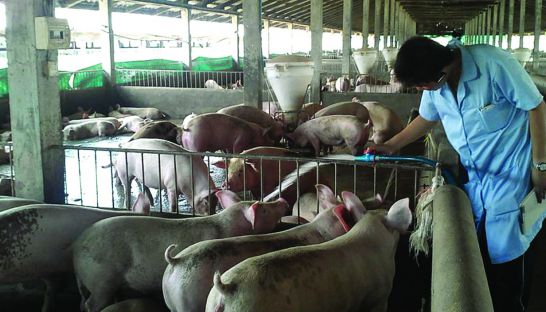Pig factory exports first batch of leather
Pig factory exports first batch of leather
Agro-industrial giant Mong Reththy Group exported its first batch of processed pig skin leather in September and has spent the last three months testing its factory operations before scaling up exports destined for European and Japanese markets, a company executive said yesterday.

Mong Reththy Group’s pig skin factory, which is the first of its kind in Cambodia, began construction in early 2016 with the help of an unnamed Chinese partner which invested into the $30 million joint project, according to Tan Monivann, the group’s vice president. The factory is located near the group’s private port in Preah Sihanouk province.
According to Tan, the first export shipment accounted for 18 tonnes of leather.
“We are now partially operational and have already hit our goal of making our first shipment to the international market,” he said, adding that the factory imported the unprocessed pig skins.
While the group is eyeing the European and Japanese markets, an accountant for the firm who declined to be named said yesterday that the first 18 tonnes of leather went to China to be tested for quality.
Despite the group operating its own commercial pig farm, Tan said that the pigs the company raises are not suitable for leather production.
“Even though we have the same species of pigs here, we can’t use them for leather production because the of their skins does not meet leather standards,” he said. “Plus, we do not have the experts to properly slaughter the pigs for leather purposes.”
Hort Pheng, director of Industrial Affairs Department at the Ministry of Industry and Handicraft, said that the production of leather for export is a sign of economic diversification in a country heavily reliant on garments.
“The exporting of leather shows off another industrial achievement by Mong Reththy Group and also is an indicator that we don’t need to only rely on garments,” he said. “Cambodia is on the path of transforming its industries as we gain more skills.”


